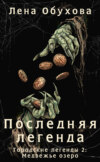Loe raamatut: «At Last: A Christmas in the West Indies»
AT LAST: A CHRISTMAS IN THE WEST INDIES
TO HIS EXCELLENCY THE HON. SIR ARTHUR GORDON, GOVERNOR OF MAURITIUS
My Dear Sir Arthur Gordon,
To whom should I dedicate this book, but to you, to whom I owe my visit to the West Indies? I regret that I could not consult you about certain matters in Chapters XIV and XV; but you are away again over sea; and I can only send the book after you, such as it is, with the expression of my hearty belief that you will be to the people of Mauritius what you have been to the people of Trinidad.
I could say much more. But it is wisest often to be most silent on the very points on which one longs most to speak.
Ever yours,C. KINGSLEY.
CHAPTER I: OUTWARD BOUND
At last we, too, were crossing the Atlantic. At last the dream of forty years, please God, would be fulfilled, and I should see (and happily, not alone) the West Indies and the Spanish Main. From childhood I had studied their Natural History, their charts, their Romances, and alas! their Tragedies; and now, at last, I was about to compare books with facts, and judge for myself of the reported wonders of the Earthly Paradise. We could scarce believe the evidence of our own senses when they told us that we were surely on board a West Indian steamer, and could by no possibility get off it again, save into the ocean, or on the farther side of the ocean; and it was not till the morning of the second day, the 3d of December, that we began to be thoroughly aware that we were on the old route of Westward-Ho, and far out in the high seas, while the Old World lay behind us like a dream.
Like dreams seemed now the last farewells over the taffrel, beneath the chill low December sun; and the shining calm of Southampton water, and the pleasant and well-beloved old shores and woods and houses sliding by; and the fisher-boats at anchor off Calshot, their brown and olive sails reflected in the dun water, with dun clouds overhead tipt with dull red from off the setting sun—a study for Vandevelde or Backhuysen in the tenderest moods. Like a dream seemed the twin lights of Hurst Castle and the Needles, glaring out of the gloom behind us, as if old England were watching us to the last with careful eyes, and bidding us good speed upon our way. Then had come—still like a dream—a day of pouring rain, of lounging on the main-deck, watching the engines, and watching, too (for it was calm at night), the water from the sponson behind the paddle-boxes; as the live flame-beads leaped and ran amid the swirling snow, while some fifteen feet beyond the untouched oily black of the deep sea spread away into the endless dark.
It took a couple of days to arrange our little cabin Penates; to discover who was on board; and a couple of days, too, to become aware, in spite of sudden starts of anxiety, that there was no post, and could be none; that one could not be wanted, or, if one was wanted, found and caught; and it was not till the fourth morning that the glorious sense of freedom dawned on the mind, as through the cabin port the sunrise shone in, yellow and wild through flying showers, and great north-eastern waves raced past us, their heads torn off in spray, their broad backs laced with ripples, and each, as it passed, gave us a friendly onward lift away into the ‘roaring forties,’ as the sailors call the stormy seas between 50 and 40 degrees of latitude.
These ‘roaring forties’ seem all strangely devoid of animal life—at least in a December north-east gale; not a whale did we see—only a pair of porpoises; not a sea-bird, save a lonely little kittiwake or two, who swung round our stern in quest of food: but the seeming want of life was only owing to our want of eyes; each night the wake teemed more bright with flame-atomies. One kind were little brilliant sparks, hurled helpless to and fro on the surface, probably Noctilucæ; the others (what they may be we could not guess at first) showed patches of soft diffused light, paler than the sparks, yet of the same yellow-white hue, which floated quietly past, seeming a foot or two below the foam. And at the bottom, far beneath, deeper under our feet than the summit of the Peak of Teneriffe was above our heads—for we were now in more than two thousand fathoms water—what exquisite forms might there not be? myriads on myriads, generations on generations, people the eternal darkness, seen only by Him to whom the darkness is as light as day: and to be seen hereafter, a few of them—but how few—when future men of science shall do for this mid-Atlantic sea-floor what Dr. Carpenter and Dr. Wyville Thomson have done for the North Atlantic, and open one more page of that book which has, to us creatures of a day, though not to Him who wrote it as the Time-pattern of His timeless mind, neither beginning nor end.
So, for want of animal life to study, we were driven to study the human life around us, pent up there in our little iron world. But to talk too much of fellow-passengers is (though usual enough just now) neither altogether fair nor kind. We see in travel but the outside of people, and as we know nothing of their inner history, and little, usually, of their antecedents, the pictures which we might sketch of them would be probably as untruthfully as rashly drawn. Crushed together, too, perforce, against each other, people are apt on board ship to make little hasty confidences, to show unawares little weaknesses, which should be forgotten all round the moment they step on shore and return to something like a normal state of society. The wisest and most humane rule for a traveller toward his companion is to
‘Be to their faults a little blind;
Be to their virtues very kind;’
and to consider all that is said and done on board, like what passes among the members of the same club, as on the whole private and confidential. So let it suffice that there were on board the good steamship Shannon, as was to be expected, plenty of kind, courteous, generous, intelligent people; officials, travellers—one, happy man! away to discover new birds on the yet unexplored Rio Magdalena, in New Grenada; planters, merchants, what not, all ready, when once at St. Thomas’s, to spread themselves over the islands, and the Spanish Main, and the Isthmus of Panama, and after that, some of them, down the Pacific shore to Callao and Valparaiso. The very names of their different destinations, and the imagination of the wonders they would see (though we were going to a spot as full of wonders as any), raised something like envy in our breasts, all the more because most of them persisted in tantalising us, in the hospitable fashion of all West Indians, by fruitless invitations to islands and ports, which to have seen were ‘a joy for ever.’
But almost the most interesting group of all was one of Cornish miners, from the well-known old Redruth and Camborne county, and the old sacred hill of Carn-brea, who were going to seek their fortunes awhile in silver mines among the Andes, leaving wives and children at home, and hoping, ‘if it please God, to do some good out there,’ and send their earnings home. Stout, bearded, high-cheek-boned men they were, dressed in the thick coats and rough caps, and, of course, in the indispensable black cloth trousers, which make a miner’s full dress; and their faces lighted up at the old pass-word of ‘Down-Along’; for whosoever knows Down-Along, and the speech thereof, is at once a friend and a brother. We had many a pleasant talk with them ere we parted at St. Thomas’s.
And on to St. Thomas’s we were hurrying; and, thanks to the north-east wind, as straight as a bee-line. On the third day we ran two hundred and fifty-four miles; on the fourth two hundred and sixty; and on the next day, at noon, where should we be? Nearing the Azores; and by midnight, running past them, and away on the track of Columbus, towards the Sargasso Sea.
We stayed up late on the night of December 7, in hopes of seeing, as we passed Terceira, even the loom of the land: but the moon was down; and a glimpse of the ‘Pico’ at dawn next morning was our only chance of seeing, at least for this voyage, those wondrous Isles of the Blest—Isles of the Blest of old; and why not still? They too are said to be earthly paradises in soil, climate, productions; and yet no English care to settle there, nor even to go thither for health, though the voyage from Lisbon is but a short one, and our own mail steamers, were it made worth their while, could as easily touch at Terceira now as they did a few years since.
And as we looked out into the darkness, we could not but recollect, with a flush of pride, that yonder on the starboard beam lay Flores, and the scene of that great fight off the Azores, on August 30, 1591, made ever memorable by the pen of Walter Raleigh—and of late by Mr. Froude; in which the Revenge, with Sir Richard Grenville for her captain, endured for twelve hours, before she struck, the attack of eight great Spanish armadas, of which two (three times her own burden) sank at her side; and after all her masts were gone, and she had been three times boarded without success, defied to the last the whole fleet of fifty-one sail, which lay around her, waiting, ‘like dogs around the dying forest-king,’ for the Englishman to strike or sink. Yonder away it was, that, wounded again and again, and shot through body and through head, Sir Richard Grenville was taken on board the Spanish Admiral’s ship to die; and gave up his gallant ghost with those once-famous words: ‘Here die I, Richard Grenville, with a joyful and quiet mind; for that I have ended my life as a true soldier ought, fighting for his country, queen, religion, and honour; my soul willingly departing from this body, leaving behind the lasting fame of having behaved as every valiant soldier is in his duty bound to do.’
Yes; we were on the track of the old sea-heroes; of Drake and Hawkins, Carlile and Cavendish, Cumberland and Raleigh, Preston and Sommers, Frobisher and Duddeley, Keymis and Whiddon, which last, in that same Flores fight, stood by Sir Richard Grenville all alone, and, in ‘a small ship called the Pilgrim, hovered all night to see the successe: but in the morning, bearing with the Revenge, was hunted like a hare amongst many ravenous houndes, but escaped’ 1—to learn, in after years, in company with hapless Keymis, only too much about that Trinidad and Gulf of Paria whither we were bound.
Yes. There were heroes in England in those days. Are we, their descendants, degenerate from them? I, for one, believe not But they were taught—what we take pride in refusing to be taught—namely, to obey.
The morning dawned: but Pico, some fifty miles away, was taking his morning bath among the clouds, and gave no glimpse of his eleven thousand feet crater cone, now capped, they said, with winter snow. Yet neither last night’s outlook nor that morning’s was without result. For as the steamer stopped last night to pack her engines, and slipped along under sail at some three knots an hour, we made out clearly that the larger diffused patches of phosphorescence were Medusæ, slowly opening and shutting, and rolling over and over now and then, giving out their light, as they rolled, seemingly from the thin limb alone, and not from the crown of their bell. And as we watched, a fellow-passenger told how, between Ceylon and Singapore, he had once witnessed that most rare and unexplained phenomenon of a ‘milky sea,’ of which Dr. Collingwood writes (without, if I remember right, having seen it himself) in his charming book, A Naturalist’s Rambles in the China Seas. Our friend described the appearance as that of a sea of shining snow rather than of milk, heaving gently beneath a starlit but moonless sky. A bucket of water, when taken up, was filled with the same half-luminous whiteness, which stuck to its sides when the water was drained off. The captain of the Indiaman was well enough aware of the rarity of the sight to call all the passengers on deck to see what they would never see again; and on asking our captain, he assured us that he had not only never seen, but never heard of the appearance in the West Indies. One curious fact, then, was verified that night.
The next morning gave us unmistakable tokens that we were nearing the home of the summer and the sun. A north-east wind, which would in England keep the air at least at freezing in the shade, gave here a temperature just over 60°; and gave clouds, too, which made us fancy for a moment that we were looking at an April thunder sky, soft, fantastic, barred, and feathered, bright white where they ballooned out above into cumuli, rich purple in their massive shadows, and dropping from their under edges long sheets of inky rain. Thanks to the brave North-Easter, we had gained in five days thirty degrees of heat, and had slipped out of December into May. The North-Easter, too, was transforming itself more and more into the likeness of a south-west wind; say, rather, renewing its own youth, and becoming once more what it was when it started on its long journey from the Tropics towards the Pole. As it rushes back across the ocean, thrilled and expanded by the heat, it opens its dry and thirsty lips to suck in the damp from below, till, saturated once more with steam, it will reach the tropic as a gray rain-laden sky of North-East Trade.
So we slipped on, day after day, in a delicious repose which yet was not monotonous. Those, indeed, who complain of the monotony of a voyage must have either very few resources in their own minds, or much worse company than we had on board the Shannon. Here, every hour brought, or might bring, to those who wished, not merely agreeable conversation about the Old World behind us, but fresh valuable information about the New World before us. One morning, for instance, I stumbled on a merchant returning to Surinam, who had fifty things to tell of his own special business—of the woods, the drugs, the barks, the vegetable oils, which he was going back to procure—a whole new world of yet unknown wealth and use. Most cheering, too, and somewhat unexpected, were the facts we heard of the improving state of our West India Colonies, in which the tide of fortune seems to have turned at last, and the gallant race of planters and merchants, in spite of obstacle on obstacle, some of them unjust and undeserved, are winning their way back (in their own opinion) to a prosperity more sound and lasting than that which collapsed so suddenly at the end of the great French war. All spoke of the emancipation of the slaves in Cuba (an event certain to come to pass ere long) as the only condition which they required to put them on an equal footing with any producers whatsoever in the New World.
However pleasant, though, the conversation might be, the smallest change in external circumstances, the least break in the perpetual—
‘Quocumque adspicias, nil est nisi pontus et aer,’
even a passing bird, if one would pass, which none would do save once or twice a stately tropic-bird, wheeling round aloft like an eagle, was hailed as an event in the day; and, on the 9th of December, the appearance of the first fragments of gulf-weed caused quite a little excitement, and set an enthusiastic pair of naturalists—a midland hunting squire, and a travelled scientific doctor who had been twelve years in the Eastern Archipelago—fishing eagerly over the bows, with an extemporised grapple of wire, for gulf-weed, a specimen of which they did not catch. However, more and more still would come in a day or two, perhaps whole acres, even whole leagues, and then (so we hoped, but hoped in vain) we should have our feast of zoophytes, crustacea, and what not.
Meanwhile, it must be remembered that this gulf-weed has not, as some of the uninitiated fancy from its name, anything to do with the Gulf Stream, along the southern edge of which we were steaming. Thrust away to the south by that great ocean-river, it lies in a vast eddy, or central pool of the Atlantic, between the Gulf Stream and the equatorial current, unmoved save by surface-drifts of wind, as floating weeds collect and range slowly round and round in the still corners of a tumbling-bay or salmon pool. One glance at a bit of the weed, as it floats past, showed that it is like no Fucus of our shores, or anything we ever saw before. The difference of look is undefinable in words, but clear enough. One sees in a moment that the Sargassos, of which there are several species on Tropical shores, are a genus of themselves and by themselves; and a certain awe may, if the beholder be at once scientific and poetical, come over him at the first sight of this famous and unique variety thereof, which has lost ages since the habit of growing on rock or sea-bottom, but propagates itself for ever floating; and feeds among its branches a whole family of fish, crabs, cuttlefish, zoophytes, mollusks, which, like the plant which shelters them, are found nowhere else in the world. And that awe, springing from ‘the scientific use of the imagination,’ would be increased if he recollected the theory—not altogether impossible—that this sargasso (and possibly some of the animals which cling to it) marks the site of an Atlantic continent, sunk long ages since; and that, transformed by the necessities of life from a rooting to a floating plant,
‘Still it remembers its august abodes,’
and wanders round and round as if in search of the rocks where it once grew. We looked eagerly day by day for more and more gulf-weed, hoping that
‘Slimy things would crawl with legs
Upon that slimy sea,’
and thought of the memorable day when Columbus’s ship first plunged her bows into the tangled ‘ocean meadow,’ and the sailors, naturally enough, were ready to mutiny, fearing hidden shoals, ignorant that they had four miles of blue water beneath their keel, and half recollecting old Greek and Phœnician legends of a weedy sea off the coast of Africa, where the vegetation stopped the ships and kept them entangled till all on board were starved.
Day after day we passed more and more of it, often in long processions, ranged in the direction of the wind; while, a few feet below the surface, here and there floated large fronds of a lettuce-like weed, seemingly an ulva, the bright green of which, as well as the rich orange hue of the sargasso, brought out by contrast the intense blue of the water.
Very remarkable, meanwhile, and unexpected, was the opacity and seeming solidity of the ocean when looked down on from the bows. Whether sapphire under the sunlight, or all but black under the clouds, or laced and streaked with beads of foam, rising out of the nether darkness, it looks as if it could resist the hand; as if one might almost walk on it; so unlike any liquid, as seen near shore or inland, is this leaping, heaving plain, reminding one, by its innumerable conchoidal curves, not of water, not even of ice, but rather of obsidian.
After all we got little of the sargasso. Only in a sailing ship, and in calms or light breezes, can its treasures be explored. Twelve knots an hour is a pace sufficient to tear off the weed, as it is hauled alongside, all living things which are not rooted to it. We got, therefore, no Crustacea; neither did we get a single specimen of the Calamaries, 2 which may be described as cuttlefish carrying hooks on their arms as well as suckers, the lingering descendants of a most ancient form, which existed at least as far back as the era of the shallow oolitic seas, x or y thousand years ago. A tiny curled Spirorbis, a Lepraria, with its thousandfold cells, and a tiny polype belonging to the Campanularias, with a creeping stem, which sends up here and there a yellow-stalked bell, were all the parasites we saw. But the sargasso itself is a curious instance of the fashion in which one form so often mimics another of a quite different family. When fresh out of the water it resembles not a sea-weed so much as a sprig of some willow-leaved shrub, burdened with yellow berries, large and small; for every broken bit of it seems growing, and throwing out ever new berries and leaves—or what, for want of a better word, must be called leaves in a sea-weed. For it must be remembered that the frond of a sea-weed is not merely leaf, but root also; that it not only breathes air, but feeds on water; and that even the so-called root by which a sea-weed holds to the rock is really only an anchor, holding mechanically to the stone, but not deriving, as the root of a land-plant would, any nourishment from it. Therefore it is, that to grow while uprooted and floating, though impossible to most land plants, is easy enough to many sea-weeds, and especially to the sargasso.
The flying-fish now began to be a source of continual amusement as they scuttled away from under the bows of the ship, mistaking her, probably, for some huge devouring whale. So strange are they when first seen, though long read of and long looked for, that it is difficult to recollect that they are actually fish. The first little one was mistaken for a dragon-fly, the first big one for a gray plover. The flight is almost exactly like that of a quail or partridge—flight, I must say; for, in spite of all that has been learnedly written to the contrary, it was too difficult as yet for the English sportsmen on board to believe that their motion was not a true flight, aided by the vibration of the wings, and not a mere impulse given (as in the leap of the salmon) by a rush under water. That they can change their course at will is plain to one who looks down on them from the lofty deck, and still more from the paddle-box. The length of the flight seems too great to be attributed to a few strokes of the tail; while the plain fact that they renew their flight after touching, and only touching, the surface, would seem to show that it was not due only to the original impetus, for that would be retarded, instead of being quickened, every time they touched. Such were our first impressions: and they were confirmed by what we saw on the voyage home.
The nights as yet, we will not say disappointed us,—for to see new stars, like Canopus and Fomalhaut, shining in the far south, even to see Sirius, in his ever-changing blaze of red and blue, riding high in a December heaven, is interesting enough; but the brilliance of the stars is not, at least at this season, equal to that of a frosty sky in England. Nevertheless, to make up for the deficiency, the clouds were glorious; so glorious, that I longed again and again, as I did afterwards in the West Indies, that Mr. Ruskin were by my side, to see and to describe, as none but he can do. The evening skies are fit weeds for widowed Eos weeping over the dying Sun; thin, formless, rent—in carelessness, not in rage; and of all the hues of early autumn leaves, purple and brown, with green and primrose lakes of air between: but all hues weakened, mingled, chastened into loneliness, tenderness, regretfulness, through which still shines, in endless vistas of clear western light, the hope of the returning day. More and more faint, the pageant fades below towards the white haze of the horizon, where, in sharpest contrast, leaps and welters against it the black jagged sea; and richer and richer it glows upwards, till it cuts the azure overhead: until, only too soon—
‘The sun’s rim dips, the stars rush out,
At one stride comes the dark,’
to be succeeded, after the long balmy night, by a sunrise which repeats the colours of the sunset, but this time gaudy, dazzling, triumphant, as befits the season of faith and hope. Such imagery, it may be said, is hackneyed now, and trite even to impertinence. It might be so at home; but here, in presence of the magnificent pageant of tropic sunlight, it is natural, almost inevitable; and the old myth of the daily birth and death of Helios, and the bridal joys and widowed tears of Eos, re-invents itself in the human mind, as soon as it asserts its power—it may be, its sacred right—to translate nature into the language of the feelings.
And, meanwhile, may we not ask—have we not a right—founded on that common sense of the heart which often is the deepest reason—to ask, If we, gross and purblind mortals, can perceive and sympathise with so much beauty in the universe, then how much must not He perceive, with how much must not He sympathise, for whose pleasure all things are, and were created? Who that believes (and rightly) the sense of beauty to be among the noblest faculties of man, will deny that faculty to God, who conceived man and all besides?
Wednesday, the 15th, was a really tropic day; blazing heat in the forenoon, with the thermometer at 82° in the shade, and in the afternoon stifling clouds from the south-west, where a dark band of rain showed, according to the planters’ dictum, showers over the islands, which we were nearing fast. At noon we were only two hundred and ten miles from Sombrero, ‘the Spanish Hat,’ a lonely island, which is here the first outlier of the New World. We ought to have passed it by sunrise on the 16th, and by the afternoon reached St. Thomas’s, where our pleasant party would burst like a shell in all directions, and scatter its fragments about all coasts and isles—from Demerara to Panama, from Mexico to the Bahamas. So that day was to the crew a day of hard hot work—of lifting and sorting goods on the main-deck, in readiness for the arrival at St. Thomas’s, and of moving forwards two huge empty boilers which had graced our spar-deck, filled with barrels of onions and potatoes, all the way from Southampton. But in the soft hot evening hours, time was found for the usual dance on the quarter-deck, with the band under the awning, and lamps throwing fantastic shadows, and waltzing couples, and the crew clustering aft to see, while we old folks looked on, with our ‘Ludite dum lubet, pueri,’ till the captain bade the sergeant-at-arms leave the lights burning for an extra half hour; and ‘Sir Roger de Coverley’ was danced out, to the great amusement of the foreigners, at actually half-past eleven. After which unexampled dissipation, all went off to rest, promising to themselves and their partners that they would get up at sunrise to sight Sombrero.
But, as it befell, morning’s waking brought only darkness, the heavy pattering of a tropic shower, and the absence of the everlasting roll of the paddle-wheels. We were crawling slowly along, in thick haze and heavy rain, having passed Sombrero unseen; and were away in a gray shoreless world of waters, looking out for Virgin Gorda; the first of those numberless isles which Columbus, so goes the tale, discovered on St. Ursula’s day, and named them after the Saint and her eleven thousand mythical virgins. Unfortunately, English buccaneers have since then given to most of them less poetic names. The Dutchman’s Cap, Broken Jerusalem, The Dead Man’s Chest, Rum Island, and so forth, mark a time and a race more prosaic, but still more terrible, though not one whit more wicked and brutal, than the Spanish Conquistadores, whose descendants, in the seventeenth century, they smote hip and thigh with great destruction.
The farthest of these Virgin Islands is St. Thomas’s. And there ended the first and longer part of a voyage unmarred by the least discomfort, discourtesy, or dulness, and full of enjoyment, for which thanks are due alike to captain, officers, crew, and passengers, and also to our much-maligned friend the North-East wind, who caught us up in the chops of the Channel, helped us graciously on nearly to the tropic of Cancer, giving us a more prosperous passage than the oldest hands recollect at this season, and then left us for a while to the delicious calms of the edge of the tropic, to catch us up again as the North-East Trade.
Truly, this voyage had already given us much for which to thank God. If safety and returning health, in an atmosphere in which the mere act of breathing is a pleasure, be things for which to be thankful, then we had reason to say in our hearts that which is sometimes best unsaid on paper.
Our first day in a tropic harbour was spent in what might be taken at moments for a dream, did not shells and flowers remain to bear witness to its reality. It was on Friday morning, December 17th, that we first sighted the New World; a rounded hill some fifteen hundred feet high, which was the end of Virgin Gorda. That resolved itself, as we ran on, into a cluster of long, low islands; St. John’s appearing next on the horizon, then Tortola, and last of all St. Thomas’s; all pink and purple in the sun, and warm-gray in the shadow, which again became, as we neared them one after the other, richest green, of scrub and down, with bright yellow and rusty rocks, plainly lava, in low cliffs along the shore. The upper outline of the hills reminded me, with its multitudinous little coves and dry gullies, of the Vivarais or Auvergne Hills; and still more of the sketches of the Chinese Tea-mountains in Fortune’s book. Their water-line has been exposed, evidently for many ages, to the gnawing of the sea at the present level. Everywhere the lava cliffs are freshly broken, toppling down in dust and boulders, and leaving detached stacks and skerries, like that called the ‘Indians,’ from its supposed likeness to a group of red-brown savages afloat in a canoe. But, as far as I could see, there has been no upheaval since the land took its present shape. There is no trace of raised beaches, or of the terraces which would have inevitably been formed by upheaval on the soft sides of the lava hills. The numberless deep channels which part the isles and islets would rather mark depression still going on. Most beautiful meanwhile are the winding channels of blue water, like land-locked lakes, which part the Virgins from each other; and beautiful the white triangular sails of the canoe-rigged craft, which beat up and down them through strong currents and cockling seas. The clear air, the still soft outlines, the rich and yet delicate colouring, stir up a sense of purity and freshness, and peace and cheerfulness, such as is stirred up by certain views of the Mediterranean and its shores; only broken by one ghastly sight—the lonely mast of the ill-fated Rhone, standing up still where she sank with all her crew, in the hurricane of 1867.




















